Hey Steemians. Have you ever just sat there in silence and thought to yourself, “Hey! What is Force? Why is there a thing as force? Why is it important in classical mechanics? What is life? Why am I here?” No? Yeah. Me neither. Hahahahahelpmehahahaha nervous laughter

Well, today we are going to discuss something truly glorious. We are going to get into the Newton’s laws of motion. You have probably heard of his name or perhaps his legacy even though you have not heard about his works. While some undergrad students wish it were the tree instead of the apple that fell on him, we all can appreciate the accomplishment of Sir Isaac Newton in the field of Classical Physics.
And in this post I am going to try to clarify to you in the very basic sense what the Newton’s First law of motion really means. For that, we will need to start from the very basic. Let’s start with what force is.
FORCE
In general, when we say force, we mean an interaction in which there is always either a pull or a push between two or more bodies. So, what does that mean? What can you do with a force? You can Exert it. You can exert a force on to an object.
And the unit we express in SI is the Newtons (N). In fps or cgs, you would have to use pounds.
Can you exert a force on yourself though?
We’ll come to that later. But first let’s get at quantifying vectors.
The Force is a Vector quantity because in order to define a force you’d have to define in what direction the force is being exerted and how hard the force is being exerted. Unlike mass which is a scalar since you would not need to express that you are 180 kg in the east. Just say you’re 180kg’s and people will understand that you’re fat.
But for force, you would need to say how hard it is hit and in what direction. And because it is a vector quantity, it makes the calculation of forces, vector algebra, where 1 N + 1 N is not necessarily 2N. How? Because they are vectors, the direction is very important is the calculations.
Superposition of Forces
The superposition of Forces means that if there are multiple forces acting on a body, then we could reduce this to a system in which the body has the same effect as the multiple forces, but with a single force. You could essentially replace many forces with a single force. But how do you do that?
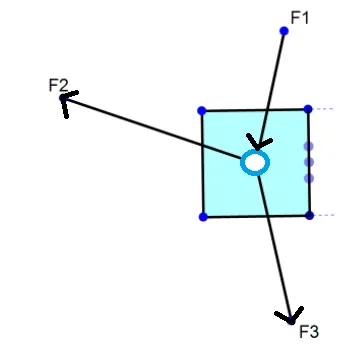
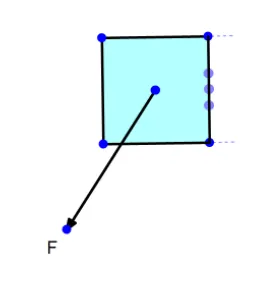
We use the fact that force is a vector quantity. And that, the multiple forces acting on the body can be represented as a single force which is a vector sum of the multiple forces.

Although, you might find forces to be very broad in sense of the entire Physics course with Electromagnetic forces, Gravitational forces, Short range nuclear forces and long range nuclear forces, in mechanics, you could name the forces on the basis of how they are exerted.
Contact force
If a force is exerted when there is contact. If you push something with your own two hands or when two bodies are in contact with each other when the force interaction is taking place.
Normal force

Normal, meaning perpendicular, is a type of contact force which is acted on a body by the surface that it is on. And perpendicular as in perpendicular to the common surface of contact (the tangent to be more precise).
Friction force
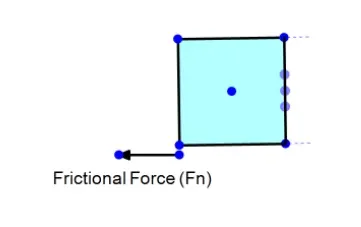
The opposing force that acts in opposite direction to the body. Friction acts on a body when it is in relative motion to a surface and is in opposite direction to the motion of the body.
Tension force
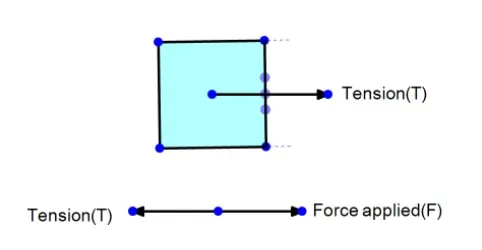
These are the kind of forces that a rope or a hanging chain exerts on a body that is tied to it.
Long ranges force
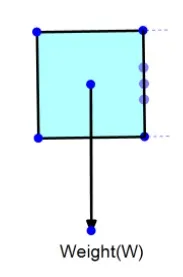
These forces act even when there is no contact between the two surfaces. For example, there is a gravitational force that acts on your body that you call weight. Yes, weight is a gravitational force measure of your body mass.
First Law of Motion:
Now that we have a vague idea of what Force is and established that it is a vector, let us see how we can quantify force and how forces can affect motion of an object.
First let us try to analyze what would happen if the force on a body were zero. That is no push or pull in any direction. Would there be motion?
Imagine you’re kicking a ball, the ball rolls and after sometimes it comes to rest. Then what would you do to move it. Kick it again! Obvious right?” Why are you writing this post. We know this already!” But wait! There is a plot twist.

We might develop this notion that there has to be force for motion to exist. But just think about it. Why did the ball stop though? Perhaps because of the grass on its path. Or there was a rock in the way. Or maybe the friction between the ball and the ground. So, then what if there was no obstruction in the way. What if the ball was free to roll without any friction or grass or any hindrance. By simple deduction we could say if there is no cause for the ball to stop, then there is no reason for it to stop.
What we’ve thought-experimented ladies and gentlemen is the first law of motion. The statement of Newton’s First law of motion goes like this:
“A body stays or tends to stay in its state of rest or Uniform motion unless an external force acts on it.”
There are two key words here.
UNIFORM
EXTERNAL
Uniform as in it goes on its motion of constant velocity (which may even be Zero thus making it at rest).
External as in force cannot be internal. Why not? Well, it can. There are many internal forces acting in a body. There are molecular forces and atomic vibrations that go on in a body all the time. But why is it not included in the first law statement? Because here we have to imply that force is going to be something that changes or tends to change the state of a body. And the internal force does neither. Just think of it like this. You cannot pull yourself to the ceiling my grabbing yourself on the collar and yanking up.
Therefore to answer our earlier question, we cannot exert force on to ourselves.
So, it can either be Uniform motion or Rest. The Notion of Uniform motion will come later in the second law of motion where you will clearly see why the motion is uniform on a numerical level.
But we can discuss the fact that the total force is zero during these conditions. Which means the vector algebraic sum of these forces is zero. This condition is called the Equilibrium.

Now that we have discussed the statement of the first law and how it gives the definition of force, we need to ask ourselves. How valid is the Newton’s first law of motion. In fact, how valid are any of his laws? Will the force behave in the same manner on Mars? On other Galaxies? On parallel Universes?
Inertial Frames of References
To answer the very posed questions above, we define a frame of reference. This concept is very important in applications of the first law of motion and in fact all the laws that follow.
Suppose you were on a skateboard in a bus. If the bus speeds up, you know from personal experience that you go back and if the bus were to slow down, you’d start moving forward. This is intuitive. But why am I discussing this with you?

Just think about what we just discussed before. There is no net force acting on your body and yet you have achieved motion. But how? Have you defied the first law of motion and is this your first step to becoming omnipotent? No sorry.
What is wrong is that the bus is moving as it accelerates and so it is not a proper place to ask for the first law to work. It just won’t. The Newton’s laws of motion are only valid for certain reference frames called the inertial frame of motion. The bus is not in inertia. That is, it is not in an inert state.
Inert state would mean it is either in rest or in uniform non accelerating motion. But the bus speeds up which means it is accelerating and not a place where we should be looking for the laws of motion to work.
And since the first law of motion is used to define what we mean by an inertial frame of reference, it is also known as the law of inertia.
Now we have to look at this situation from a perspective where we are at an inertial frame. The Earth is the closest we can get to observing the situation inertially still.
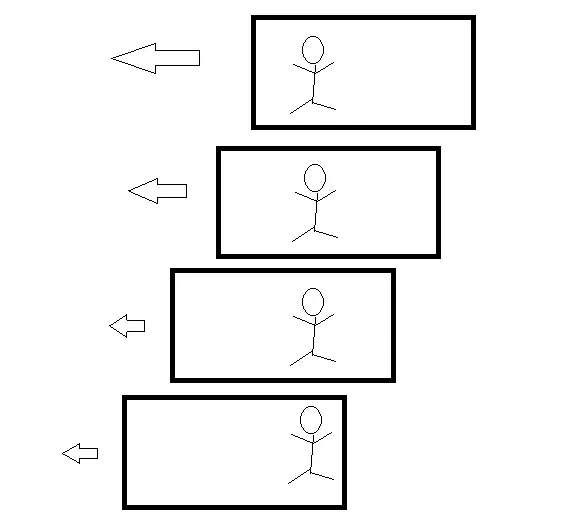
I know my artistic abilities are too good. In fact as I scribbled this fine beauty on my MS Paint, NYU texted me asking me if I wanted a scholarship in arts. But I rejected because art is just a hobby.
The box represents the bus. And the skateboard is exactly as the shape of the person on it so you can’t see it.
We can see that the person on the skateboard in fact is in rest with respect to the Inertial frame of reference which is the Earth.
Thus Newton still rules.
Here, we have discussed how the newton’s first law of motion defines force and the implication of the inertial frame of reference on the force. For further detailing we will need to go into the second law of motion.
The Second law is actually the real law of motion as they call it. Why? You’ll find out soon.
Stay tuned for the Newton’s Second law of motion and the Quantity that Numerically defines force. Until then, stay curious!!
References
Young, H. D., & Freedman, R. A. (2008). University physics. San Francisco: Pearson
Halliday, D. (2015). Fundamentals of physics. Place of publication not identified: John Wiley.
IMAGES
No Copyrights were Violated. Free Images labelled for commercial purpose were used. The images without the source are made by myself on latex and Microsoft Paint.
steemSTEM

steemSTEM is a community driven project which seeks to promote well-written and informative Science, Technology, Engineering and Mathematics posts on Steemit. The project involves curating STEM-related posts through upvoting, resteeming, offering constructive feedback, supporting scientific contests, and other related activities.